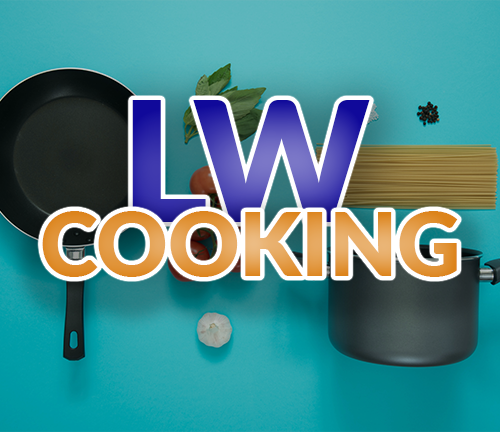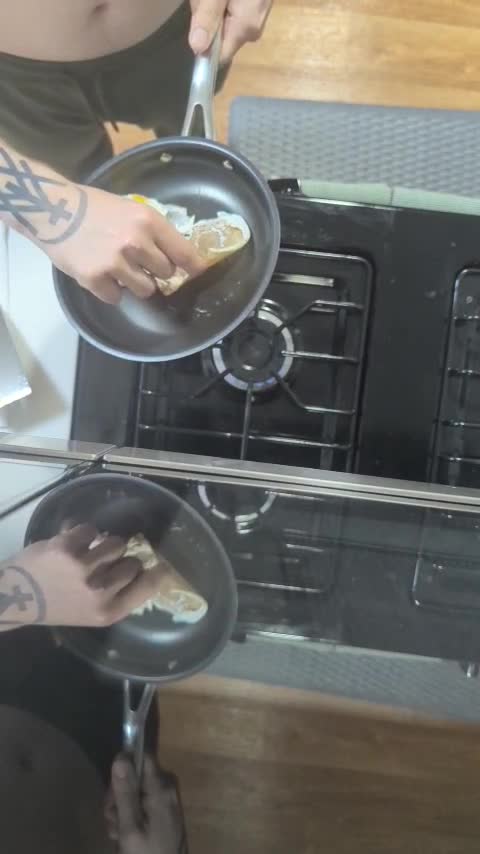I have a new non-stick pan and it’s the first time in my entire life I’ve had this issue when frying an egg.
Whether I’m on 1/10 heat (Gas stove), 3/10, or 5/10 heat it does the same thing: It films over the skin of the egg with a strange texture, but doesn’t actually stick to the pan.
In that video I managed to separate the film from the egg, but I’m wondering what I’m doing wrong to have that film develop in the first place? It’s a firm-plastic texture, like a tupperware lid.



why? whats better about cast iron or stainless steel?
in my experience stainless steel is awful and its always a mess to clean.
I used to think this too. It just takes a little bit of time to learn the proper technique. Managing heat and a little bit of fat will make them more or less able to be wiped out. I pretty much only use carbon steel and stainless now. I used to use cast iron but I got tired of lugging it around, so it only comes out if I need to sear a steak now.
I only ever cook eggs in my cast iron skillet. If I am patient enough to get it hot enough and cook with butter, and don’t mess around with the egg too much very little sticks and what does is a cinch to clean. The pans are heavy as hell though. I don’t lug except car camping. I haven’t tried stainless yet but it sounds like it would be worth doing.
I have found that I prefer the better temperature control I get from carbon or stainless. Plus they weigh a lot less.
please elaborate on your technique!
usually i have to use more oil/butter/yadda but it ends up still sticking.
I remember someone once saying, “hot pan, cold oil, food won’t stick”. So I heat my pan, put a little butter in it. It should sizzle and melt but not brown. If it starts browning then the pan is too hot. Swirl it around a little then add egg. Temperature control is really the biggest factor I’ve found. It’s also ok to take the pan off the burner if it’s too hot. This is especially true if making scrambled eggs.
No toxic forever chemicals for me.
If you don’t use metal, and don’t overheat the pan it should be fine, but once I learned ss/ci I got rid of all my non stick and never looked back.
A single steelwire sponge can clean a cast iron easy in 60 seconds for even the biggest messes.
Most people that say cast iron are difficult just haven’t been properly taught how to take care of one (including myself in the past). They are a buy for life product, my wife has skillets that have been in the family for generations.
I just use a lodge bristle brush. But yeah they’re easy enough to clean.
You can get similar non stick properties from learning to use cast iron or stainless steel. If you’re interested, I’d say start with cast iron, it’s cheaper and while you’re still learning how to make it non-stick super easy to clean by literally scratching it with chainmail!
And it’ll strengthen your arms!
i actually have an almost unused stainless steel pan.
how can i make it non stick?
Google “stainless steel water test” but basically the water starts sliding around on the pan.
For eggs it needs to be hot enough to just maintain this effect, or else they can burn and start sticking again. You can also add a bit of oil at this point but it’s not strictly necessary and can cause smoke depending on the oil used.
Unfortunately the quality of your pan also has an effect here. 3-5 layer “all clad” is best. But if you wound up with partial clad like me (the kind with a visible disk on the bottom) the section that isn’t clad will almost always get at least a bit of food stuck to it.
Learning stainless steel imo also takes more patience if you’re on electric, because you’ll need to wait longer for the temperature to settle, but not impossible. I switched to magnets! If you want to give magnets a shot, but don’t want to spend $2000+, you can get an induction hot plate online for ~$100
I looked that up and it sounds mighty hard! It seems I just opened a pandora’s box of stuff I need to learn to actually do this.
And the quality of my pan is probably not the best either.
It’s okay, just practice getting the water to bead, that’ll help a lot, and if something gets stuck, plastic or wood scrapers and barkeeper’s friend will help.
Sometimes I’ve also boiled stuck on food, that’s helped it release too.
And worst case, you make mistakes and can learn from them, no harm no foul I’d say!
My wife still does eggs in the cast iron, which is fine, anything that gets stuck on we just scrape off.
Cast iron is extra post cleaning care Stainless steel is extra cooking and cleaning care. Get barkeeper’s friend.
I like how you’re downloaded for asking a perfectly fine question.
This really is just Reddit v2